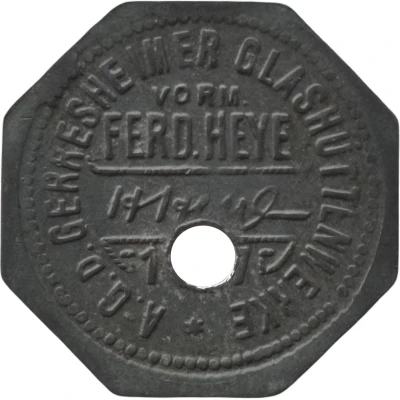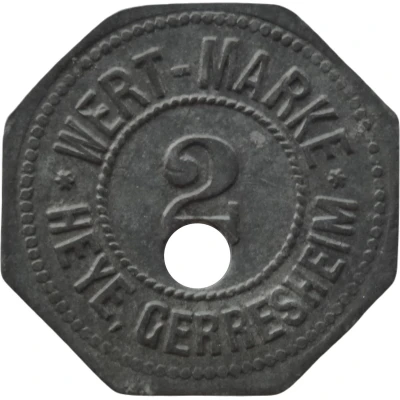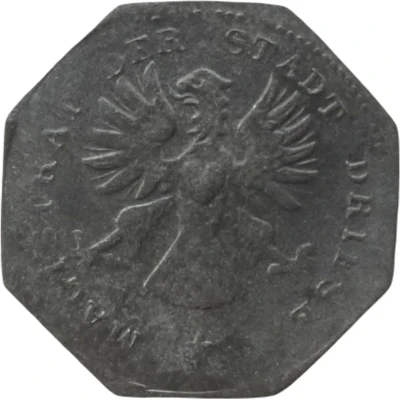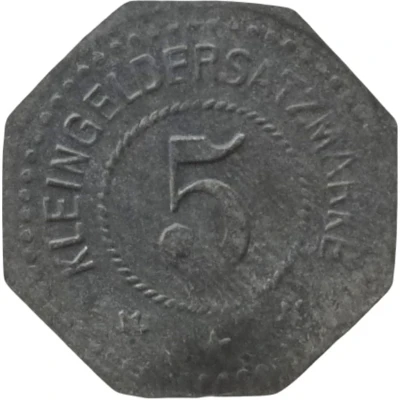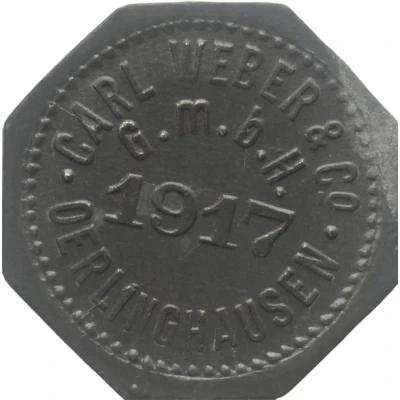
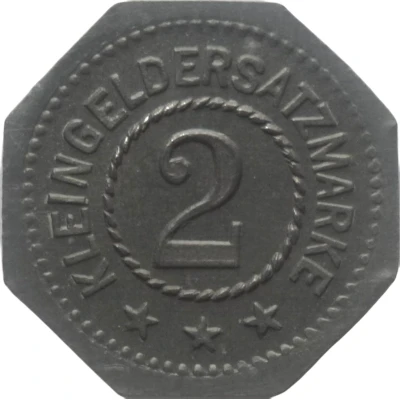

© Willem63 (CC BY-NC-SA)
2 Pfennigs - Oerlinghausen Carl Weber and C° G.m.b.H.
1917 year| Zinc | 1.3 g | 18.0 mm |
| Issuer | German notgeld (Germany) |
|---|---|
| Emperor | William II (Wilhelm II) (1888-1918) |
| Type | Standard circulation coin |
| Year | 1917 |
| Value | 2 Pfennigs (2 Pfennige) (0.02) |
| Currency | Mark (1914-1924) |
| Composition | Zinc |
| Weight | 1.3 g |
| Diameter | 18.0 mm |
| Thickness | 0.9 mm |
| Shape | Octagonal (8-sided) |
| Technique | Milled |
| Orientation | Medal alignment ↑↑ |
| Demonetized | Yes |
| Updated | 2024-10-04 |
| Numista | N#349442 |
|---|---|
| Rarity index | 97% |
Reverse
Pearl rim, legend surrounding rope circle with denomination centered
Script: Latin
Lettering:
KLEINGELDERSATZMARKE
2
★★★
Edge
Plain
Comment
Menzel: BBBFa: Leinenweberei (Linen weaving)
Interesting fact
The 2 Pfennigs - Oerlinghausen coin from 1917 was part of a series of notgeld coins issued during World War I to address a shortage of small denomination coins in Germany. The coin's design features a stylized eagle and the words "Oerlinghausen" and "Carl Weber and C° G.m.b.H." on one side, and the number "2" and the words "Pfennigs" and "Deutsches Reich" on the other. The use of zinc as the material for the coin was a common practice during this time period due to its low cost and durability.
